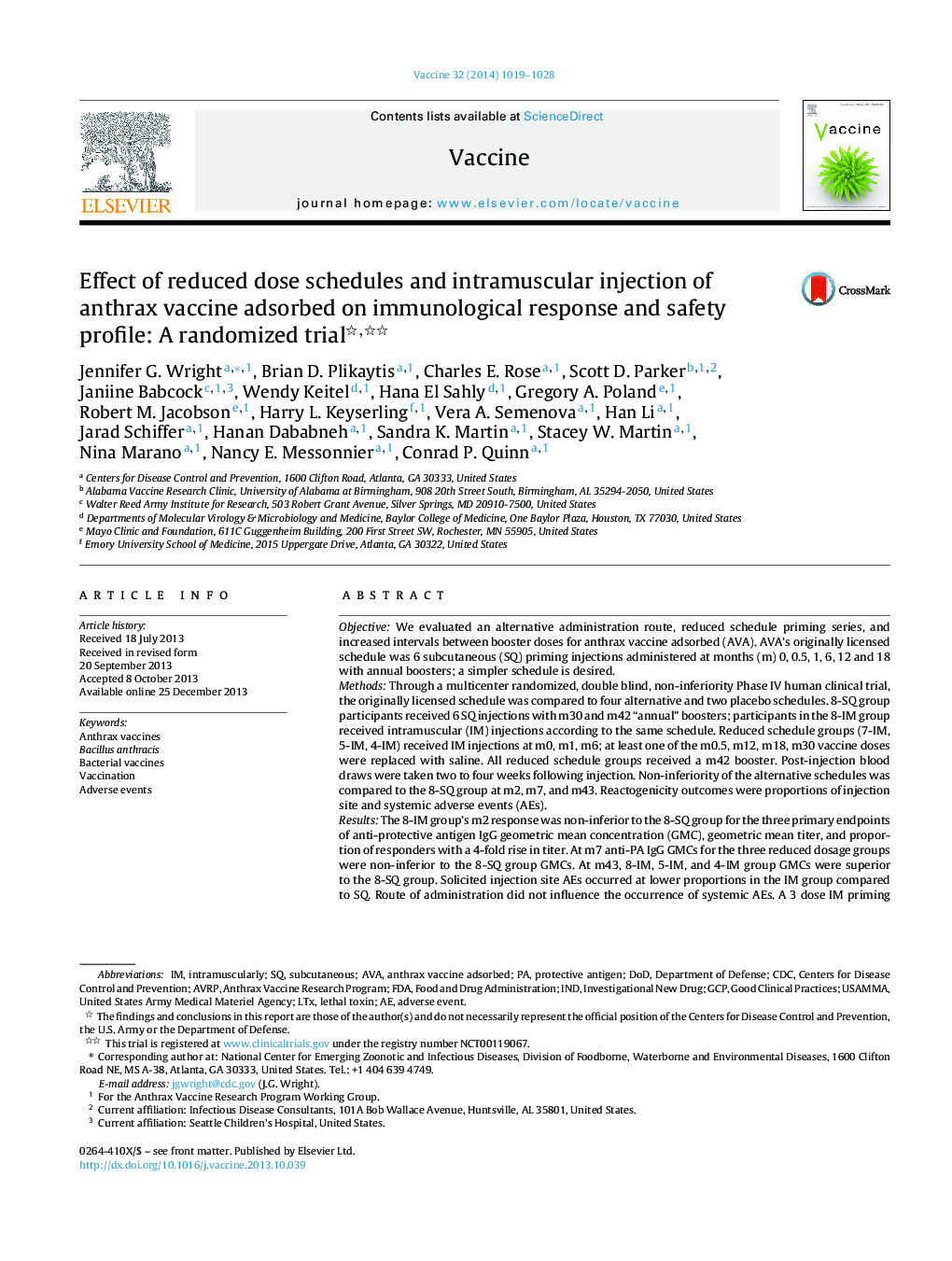| کد مقاله | کد نشریه | سال انتشار | مقاله انگلیسی | نسخه تمام متن |
|---|---|---|---|---|
| 2402415 | 1102791 | 2014 | 10 صفحه PDF | دانلود رایگان |
• Anthrax vaccine adsorbed (AVA) is the only US licensed anthrax vaccine.
• AVA administered intramuscularly results in a lower proportion of injection site adverse events compared to subcutaneous administration.
• Immunological priming is complete upon administration of 3 IM doses of AVA at months 0, 1, and 6.
• Longer time periods between booster doses achieve higher antibody responses than shorter time periods (12 months).
• Establishment of immunological memory and potent anamnestic responses indicate significant potential to reduce the booster schedule.
ObjectiveWe evaluated an alternative administration route, reduced schedule priming series, and increased intervals between booster doses for anthrax vaccine adsorbed (AVA). AVA's originally licensed schedule was 6 subcutaneous (SQ) priming injections administered at months (m) 0, 0.5, 1, 6, 12 and 18 with annual boosters; a simpler schedule is desired.MethodsThrough a multicenter randomized, double blind, non-inferiority Phase IV human clinical trial, the originally licensed schedule was compared to four alternative and two placebo schedules. 8-SQ group participants received 6 SQ injections with m30 and m42 “annual” boosters; participants in the 8-IM group received intramuscular (IM) injections according to the same schedule. Reduced schedule groups (7-IM, 5-IM, 4-IM) received IM injections at m0, m1, m6; at least one of the m0.5, m12, m18, m30 vaccine doses were replaced with saline. All reduced schedule groups received a m42 booster. Post-injection blood draws were taken two to four weeks following injection. Non-inferiority of the alternative schedules was compared to the 8-SQ group at m2, m7, and m43. Reactogenicity outcomes were proportions of injection site and systemic adverse events (AEs).ResultsThe 8-IM group's m2 response was non-inferior to the 8-SQ group for the three primary endpoints of anti-protective antigen IgG geometric mean concentration (GMC), geometric mean titer, and proportion of responders with a 4-fold rise in titer. At m7 anti-PA IgG GMCs for the three reduced dosage groups were non-inferior to the 8-SQ group GMCs. At m43, 8-IM, 5-IM, and 4-IM group GMCs were superior to the 8-SQ group. Solicited injection site AEs occurred at lower proportions in the IM group compared to SQ. Route of administration did not influence the occurrence of systemic AEs. A 3 dose IM priming schedule with doses administered at m0, m1, and m6 elicited long term immunological responses and robust immunological memory that was efficiently stimulated by a single booster vaccination at 42 months.ConclusionsA priming series of 3 intramuscular doses administered at m0, m1, and m6 with a triennial booster was non-inferior to more complex schedules for achieving antibody response.
Journal: Vaccine - Volume 32, Issue 8, 12 February 2014, Pages 1019–1028
